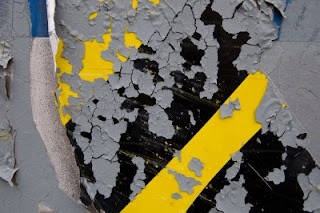
Thursday, April 30, 2009
Thursday, April 23, 2009
Friday, April 3, 2009
Thomas A. Marino
Thomas A. Marino 57 Kneeland Street, Cranston, RI 401-536-5523 thomasmarino11@aol.com thomasamarino.com
Thomas Marino is an artist and photographer. His main focus is urban landscape, macro and abstract photography. In addition to this, he is also a conceptual artist who embraces other mediums in order to produce work including installation, altered handmade objects and photographs, performance and painting. In 1988, he graduated with a BFA at the University of Rhode Island, and received his MA from Rhode Island College in 1990. Currently based in Cranston, Rhode Island, Tom, in self-describing an aspect of a photographer "As a photographer, I have no need to draw sketches. The moment of exposure is that sketch, and it can be directly transferred in an unaltered form, through the most basic darkroom work. In a similar manner to the painters that worked within the ideology of the picturesque, there is a possibility of 'perfecting' the image after the photographic sketch has been made. Although photography is valued for its ability to accurately describe a truthful rendition of what it beholds, digital technology can create a different version of reality to what has been recorded on film. Although updated, this new method is very much within the tradition of image making." With camera in hand, I seek out man-made structures that have been left behind to wither and corrode with time. Ship graveyards, abandoned buildings, obsolete machinery... these artifacts of modern civilization are what inspire me most. When the right image presents itself, canvas preparation begins. Texture is added layer upon layer using soil mixed with acrylic primer. I alternate between construction and deconstruction, repeatedly dousing the canvas with water and letting it dry to achieve a network of cracks and crevasses to mimic the effects of erosion. The photographic image is then transferred by means of acrylic polymer medium, and then restored by tediously repainting the image in oil or acrylic.
Thomas Marino is an artist and photographer. His main focus is urban landscape, macro and abstract photography. In addition to this, he is also a conceptual artist who embraces other mediums in order to produce work including installation, altered handmade objects and photographs, performance and painting. In 1988, he graduated with a BFA at the University of Rhode Island, and received his MA from Rhode Island College in 1990. Currently based in Cranston, Rhode Island, Tom, in self-describing an aspect of a photographer "As a photographer, I have no need to draw sketches. The moment of exposure is that sketch, and it can be directly transferred in an unaltered form, through the most basic darkroom work. In a similar manner to the painters that worked within the ideology of the picturesque, there is a possibility of 'perfecting' the image after the photographic sketch has been made. Although photography is valued for its ability to accurately describe a truthful rendition of what it beholds, digital technology can create a different version of reality to what has been recorded on film. Although updated, this new method is very much within the tradition of image making." With camera in hand, I seek out man-made structures that have been left behind to wither and corrode with time. Ship graveyards, abandoned buildings, obsolete machinery... these artifacts of modern civilization are what inspire me most. When the right image presents itself, canvas preparation begins. Texture is added layer upon layer using soil mixed with acrylic primer. I alternate between construction and deconstruction, repeatedly dousing the canvas with water and letting it dry to achieve a network of cracks and crevasses to mimic the effects of erosion. The photographic image is then transferred by means of acrylic polymer medium, and then restored by tediously repainting the image in oil or acrylic.
Subscribe to:
Comments (Atom)








